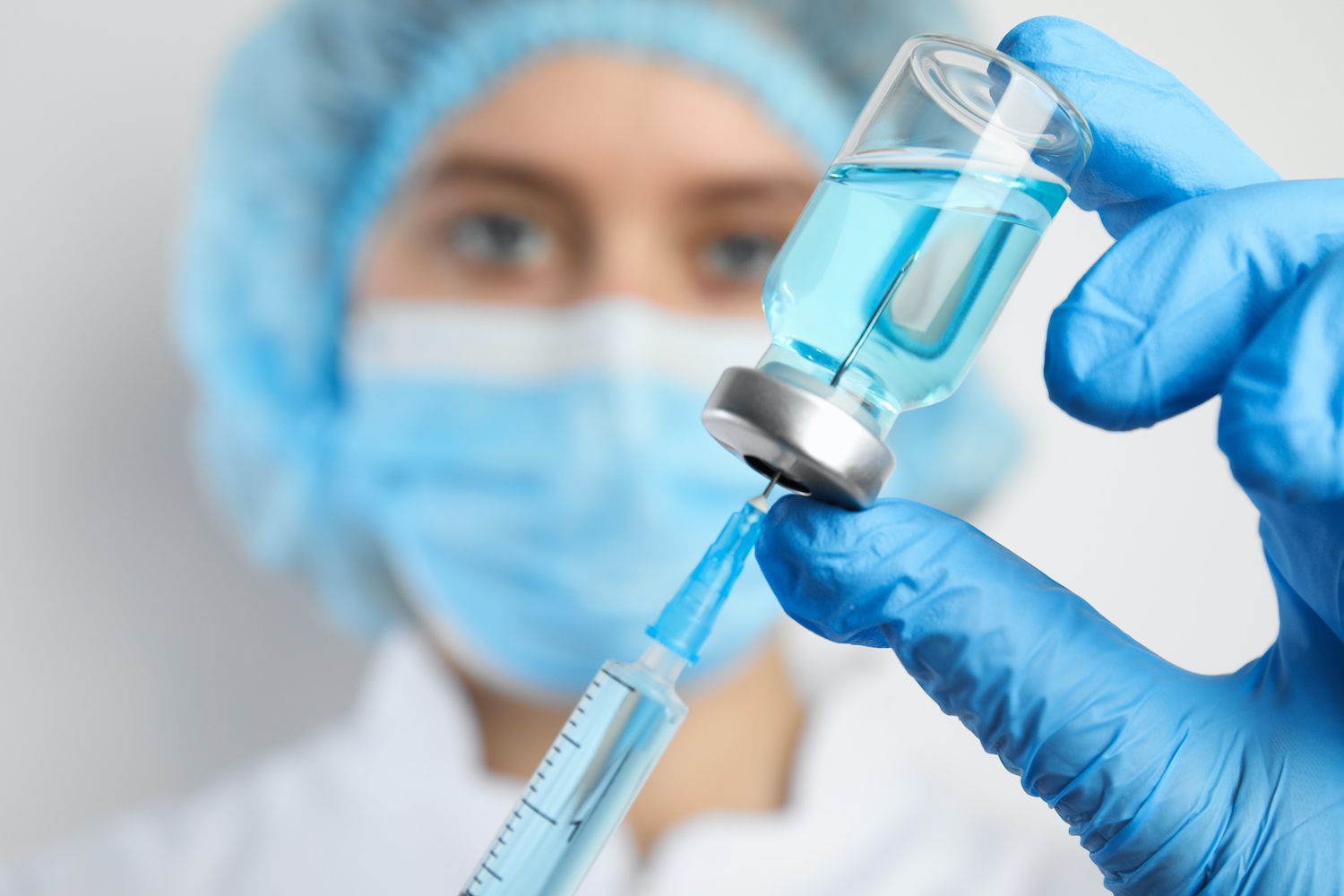By Victoria Sahadevan Fossland, Medical Writer
Information and data regarding the COVID-19 pandemic and a COVID-19 vaccine is changing rapidly. The information contained here is current as of August 11, 2020.
Normally, vaccines require years from development to approval by the US Food and Drug Administration (FDA).1 Many people are wondering how the industry can develop a vaccine against the SARS-CoV-2 virus so quickly for use in the United States. Here, we consider common questions regarding the process for US clinical trials and approval, as well as the effort toward a COVID-19 vaccine.
Editor’s note: It may help to keep in mind that the specific coronavirus variant causing the disease COVID-19 is officially named SARS-CoV-2.
What is a normal timeline for vaccine development?
A vaccine passes through multiple stages before reaching the FDA for approval. These stages include exploratory and pre-clinical stages involving lab research, clinical development, regulatory review and approval, and ongoing manufacturing and quality control.2
Once developed, vaccines must be tested in humans in clinical settings. Most people have heard the terms Phase I, Phase II, and Phase III with regard to drugs and vaccines as they move through the clinical development stage2:
- Phase I – Small groups of people receive the trial vaccine.
- Phase II – People with characteristics of the vaccine’s target population, such as age and health, receive the vaccine.
- Phase III – Thousands of people receive the vaccine to test efficacy and safety.
Phase III trials usually last several months and once successfully completed, companies submit study results to the FDA for product approval.2 To date, the mumps vaccine holds the record for the shortest timeframe from development to approval, though it still required 4 years.3
Why are scientists able to accelerate the development of a SARS-CoV-2 vaccine?
SARS-CoV-2 is similar to other viruses that leapt from animals to people, allowing scientists to repurpose projects already under development toward a SARS-CoV-2 vaccine. Six other coronaviruses are known to infect humans. Knowledge about these related viruses is helping scientists pinpoint targets for the SARS-CoV-2 vaccine.3,4
SARS-CoV-2 shares many characteristics of SARS-CoV-1 and MERS-Co-V. These 2 other highly transmissible and pathogenic viruses have demonstrated significant morbidity and mortality in humans. SARS-CoV-1 caused the original SARS outbreak in 2003, killing about 800 people, and since the outbreak of MERS in 2012, more than 2,000 people have been infected. Experience stemming from these previous outbreaks informed researchers’ approaches to the SARS-CoV-2 vaccine. With this advantage, Phase III trials of SARS-CoV-2 vaccines started just 6 months after the search for a vaccine began, in contrast to the usual 2-year time frame that other vaccines often require.3,4
In addition, because computer algorithms are being used to identify the virus’s genome, predictions can be made about the DNA sequences for possible vaccine targets as well. This is a cutting-edge approach to vaccine development and provides many avenues for scientists to explore when searching for epitopes that immune system antibodies can identify and attach to in order to protect the body from infection.3,4 Epitopes are the part of a foreign substance, known as an antigen, to which antibodies attach themselves. Note that it is possible for an antigen, such as SARS-CoV-2, to have many epitopes.
If the host is exposed to and contracts COVID-19, a successful vaccine will have prepared the host’s body for an immune response that quickly recognizes an epitope on live SARS-CoV-2, attaches antibodies to the virus, and marks it for destruction.
What are the targets of vaccines currently being developed?
A so-called spike protein present on the SARS-CoV-1, SARS-CoV-2, and MERS viruses provides a potential target, or epitope, for a SARS-CoV-2 vaccine. This spike protein, called the S protein, is important to the ability of SARS-CoV-2 to infect host cells using angiotensin-converting enzyme 2 (ACE2) receptors. ACE2 receptors are present in many human tissues, including lung, intestine, and kidney.3,4
The first vaccine in clinical trials in the US contains RNA that induces host cells to produce copies of the S protein. In turn, the host’s immune system should produce antibodies to the S protein, priming the body for SARS-CoV-2 infection.3,4
However, there are more than 165 vaccines under development against SARS-CoV-2.1 Other approaches being explored include vaccines using SARS-CoV-2 DNA, live SARS-CoV-2, or inactivated SARS-CoV-2, and vaccines that contain short protein sequences identical to those in SARS-CoV-2.4 Each of these approaches aims to teach the body to recognize a component of SARS-CoV-2 in order to produce an appropriate immune response that effectively destroys the virus.
Do any countries have SARS-CoV-2 vaccines already approved for use?
On June 25, 2020, the Chinese Central Military Commission approved use of a SARS-CoV-2 vaccine for use within the Chinese military only. The vaccine, which uses the common cold virus modified to imitate the coronavirus, is not yet available to the Chinese public while it continues to be tested in ongoing Phase III trials in China and abroad.5,6
On August 11, 2020, the Russian government announced the approval of a SARS-CoV-2 vaccine for widespread use in Russia. However, little information is available about this vaccine’s Phase III trial results.7-9
Like the Chinese vaccine mentioned above, the approved Russian vaccine utilizes adenovirus that has been genetically modified to cause infected cells to make proteins from the spike of the new coronavirus. Concerns over the Russian vaccine include the lack of complete Phase III safety and efficacy results. In particular, there is concern about whether the vaccine may lead to a dangerous, exacerbated immune response in certain individuals. Phase III trials of this vaccine are planned in multiple countries.7-9
How soon should we expect a vaccine to be approved for use in the US?
For some of the earliest vaccines to enter Phase III trials, studies may be completed as early as October or November of 2020. Although the FDA has put measures in place to facilitate accelerated approval of a SARS-CoV-2 vaccine, the vaccine must demonstrate its ability to prevent at least 50% of SARS-CoV-2 infections in a diverse population in terms of age, ethnicity, comorbidity, and health status.10
What additional challenges hamper SARS-CoV-2 vaccine development?
Besides proving efficacy and safety, successful vaccine development for SARS-CoV-2 presents unique challenges.
- Clinicians and scientists are still collecting information about the effects of SARS-CoV-2 infection on the body as well the immune system’s response. People infected with the virus have shown a wide range of susceptibility to illness as well as a range of immune responses. Some people have proven to be asymptomatic while others have become severely ill. In addition, some people have demonstrated inappropriate, exaggerated immune responses that have complicated their disease course and, in some cases, proven fatal.4,11
- It’s not yet known whether a vaccine or previous infection can provide durable immunity. Antibody responses appear to peak and then decline. It is not yet clear whether this response will confer lasting immunity to SARS-CoV-2.4,11
Once an efficacious and safe vaccine is approved, of course, future challenges await. Experts anticipate the need for more than 300 million doses of the vaccine in the US. Production will need to be optimized, access prioritized, and barriers to access—such as cost—addressed. And of course, for any vaccine to be effective, widespread vaccination will need to be encouraged and adopted by the public as stock becomes available.11
To learn more, view or download the current list of vaccines under development published by the World Health Organization (WHO).12
References
- Corum J, Grady D, Wee S and Zimmer C. Coronavirus vaccine tracker. The New York Times. Updated August 6,2020. Accessed August 7, 2020. https://www.nytimes.com/interactive/2020/science/coronavirus-vaccine-tracker.html
- Centers for Disease Control and Prevention (CDC). Vaccine testing and the approval process. CDC website. Accessed August 7, 2020. https://www.cdc.gov/vaccines/basics/test-approve.html
- Joseph A. ‘A huge experiment’: How the world made so much progression on a COVID-19 vaccine so fast. STAT. July 30, 2020. Accessed August 7, 2020. https://www.statnews.com/2020/07/30/a-huge-experiment-how-the-world-made-so-much-progress-on-a-covid-19-vaccine-so-fast/
- Poland GA, Ovsyannikova IG, Crooke SN, et al. SARS-CoV-2 vaccine development: Current status. Mayo Clin Proc. 2020. Accessed August 7, 2020. https://doi.org/10.1016/j.mayocp.2020.07.021
- Cyranoski D. China’s coronavirus vaccines are leaping ahead—but face challenges as virus wanes. Nature. July 31, 2020. Accessed August 11, 2020. https://www.nature.com/articles/d41586-020-02244-1
- CanSino’s COVID-19 vaccine candidate approved for military use in China. Reuters. June 29, 2020. Accessed August 11, 2020. https://www.reuters.com/article/us-health-coronavirus-china-vaccine/cansinos-covid-19-vaccine-candidate-approved-for-military-use-in-china-idUSKBN2400DZ
- Kramer, A. Russia approves cororovirus vaccine before completing tests. The New York Times. August 11, 2020. Accessed August 11, 2020. https://www.nytimes.com/2020/08/11/world/europe/russia-coronavirus-vaccine.html
- Callaway E. Russia’s fast-track coronavirus vaccine draws outrage over safety. Nature. August 11, 2020. Accessed August 11, 2020. https://www.nature.com/articles/d41586-020-02386-2
- Khurshudyan I, Johnson CY. Russia unveils COVID vaccine ‘Sputnik V’, claiming breakthrough in global race before final testing complete. The Washington Post. August 11, 2020. Accessed August 11, 2020. https://www.washingtonpost.com/world/russia-unveils-coronavirus-vaccine-claiming-victory-in-global-race-before-final-testing-is-complete/2020/08/11/792f8a54-d813-11ea-a788-2ce86ce81129_story.html
- Alpert B. A COVID vaccine could be ready sooner than you think. Barron’s. August 7, 2020. Accessed August 7, 2020. https://www.barrons.com/articles/a-covid-vaccine-could-be-ready-sooner-than-you-think-51596794401
- Joszt L. Experts highlight COVID-19 vaccine developments and remaining challenges. Am J Manag Care. August 4, 2020. Accessed August 11, 2020. https://www.ajmc.com/view/experts-highlight-covid-19-vaccine-developments-and-remaining-challenges
- World Health Organization (WHO). Draft landscape of COVID-19 candidate vaccines. August 10, 2020. WHO website. Accessed August 12, 2020. https://www.who.int/publications/m/item/draft-landscape-of-covid-19-candidate-vaccines
Victoria Sahadevan Fossland is a general surgeon and medical writer of print-based, interactive learning, and multimedia projects. She writes clinical education pieces about a wide variety of diseases. Her work explains disease pathophysiology, treatment, clinical trial research details, and concerns that can arise from both physician and patient perspectives. Victoria has used her expertise in distilling medical knowledge into readily comprehensible and accessible learning solutions to write many valuable communications, learning modules, and workshops for Encompass, including the script for an award-winning video.


